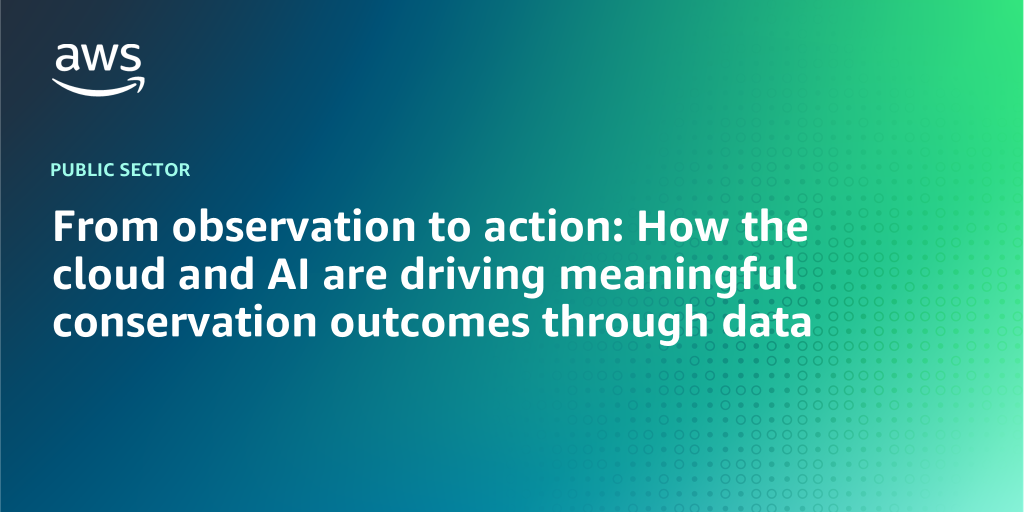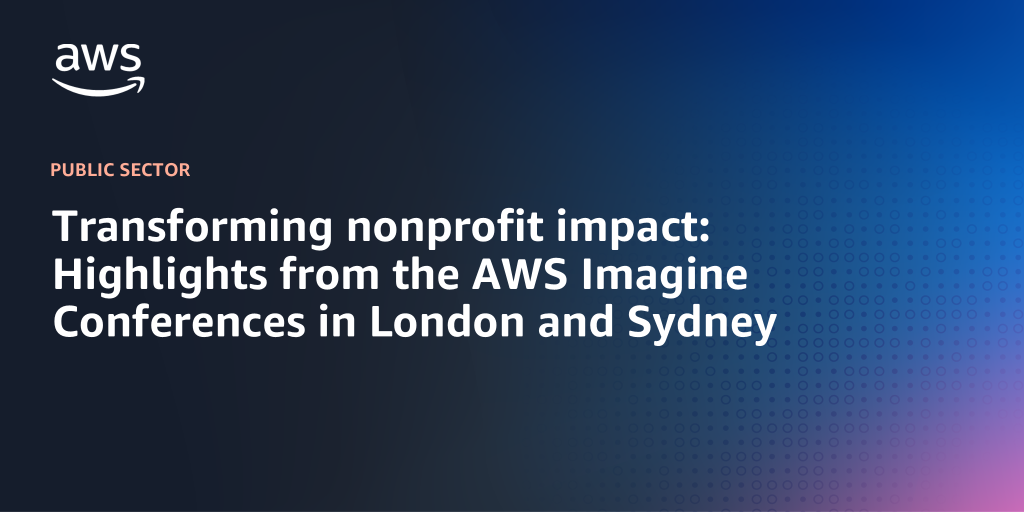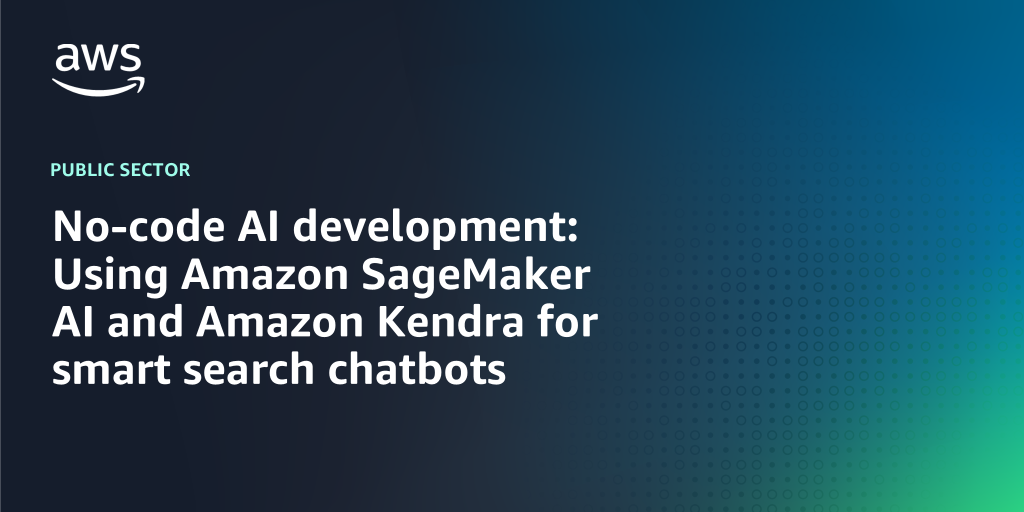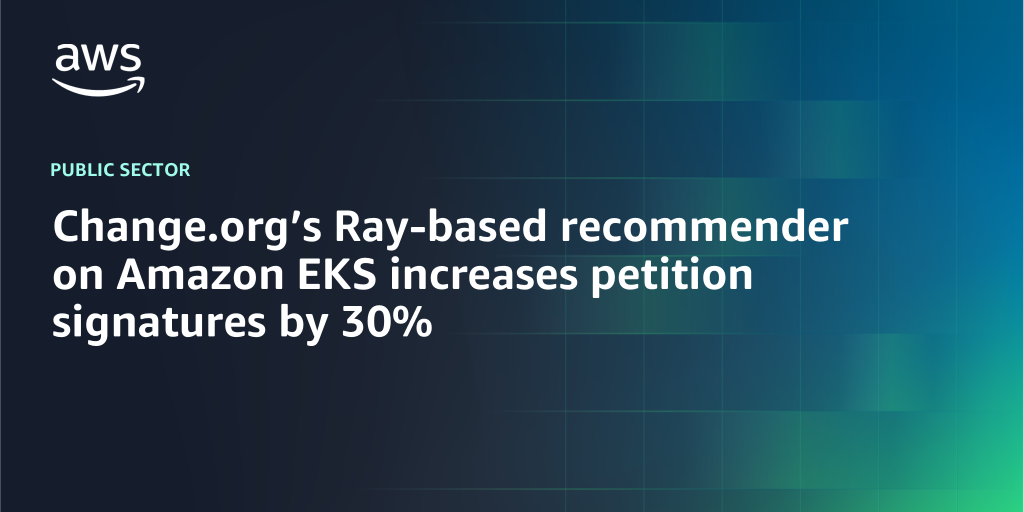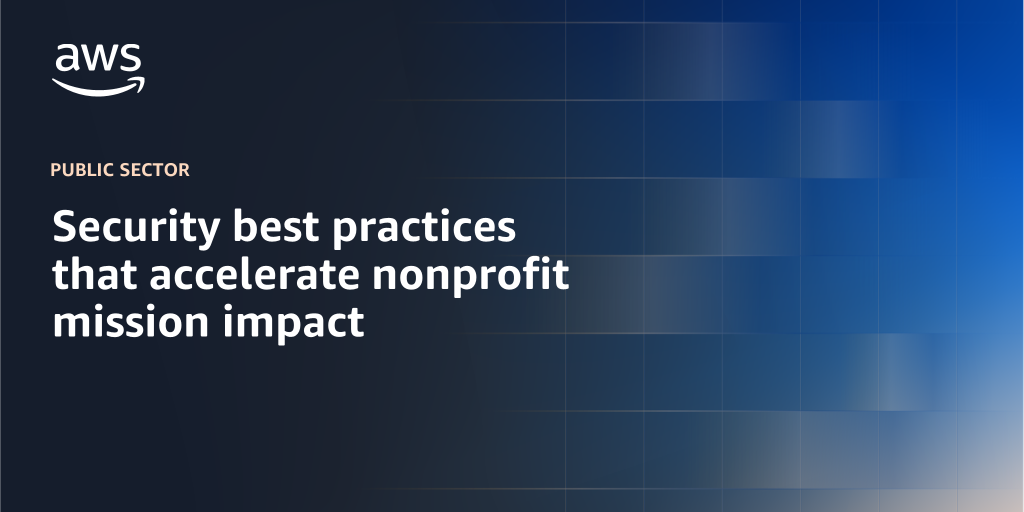AWS Public Sector Blog
Tag: nonprofits
From observation to action: How the cloud and AI are driving meaningful conservation outcomes through data
We are entering an era when conservationists don’t just have more data available, they also have far more powerful ways to connect it, collaborate with it, and drive meaningful outcomes through it. From rainforests to oceans, and across the entire surface of the earth, innovative organizations are using data to accelerate conservation outcomes with game-changing results.
Transforming nonprofit impact: Highlights from the AWS Imagine Conferences in London and Sydney
In this post, we explore some of the stories shared by public sector innovators at the AWS Imagine for Nonprofits conferences in London and Sydney, which illustrate the transformative power of cloud technology when applied thoughtfully to address significant challenges and advance mission delivery.
No-code AI development: Using Amazon SageMaker AI and Amazon Kendra for smart search chatbots
In this post, we walk through creating a Retrieval Augmented Generation (RAG)–powered chat assistant using Amazon SageMaker AI and Amazon Kendra to query donor data on AWS.
Change.org’s Ray-based recommender on Amazon EKS increases petition signatures by 30%
Read this post to learn how Change.org built a next-generation recommender on AWS that turned more awareness into action—boosting petition signatures by 30 percent.
Discover how nonprofits can utilize no-code machine learning with Amazon SageMaker Canvas
In this post, we explore how Amazon SageMaker Canvas can make machine learning accessible and actionable for nonprofit organizations. We highlight key features that allow your nonprofit to harness the power of machine learning without data science expertise or dedicated engineering teams.
Security best practices that accelerate nonprofit mission impact
Nonprofit organizations face unique security challenges due to their resource constraints and prioritization of mission-focused initiatives. In this blog post, we discuss Amazon Web Services (AWS) security best practices to accelerate mission impact and demonstrate how upfront security investments can both improve security and save time on redundant processes in the long run.
AI for social good: AWS Imagine for Nonprofits 2025 conference highlights
On March 26, 2025, nonprofit and technology leaders gathered at AWS Imagine for Nonprofits, hosted at Amazon HQ2 in Arlington, VA, to connect with peers, share success stories, explore ideas, and discover new ways to use technology for the greater good. In this post, we will share the key announcements, highlights, and takeaways from the event.
The AWS Imagine Grant launches the 2025 cycle in six countries, expanding its global reach
Today, Amazon Web Services (AWS) launched the 2025 AWS Imagine Grant cycle in six countries. The AWS Imagine Grant is a public grant opportunity open to registered nonprofit organizations who are using cloud technology to accelerate their missions. Now in its eighth year, the AWS Imagine Grant is expanding to nonprofits beyond the US, UK, and Ireland, adding Canada, Australia, and New Zealand.
How Fair Trade USA uses AWS to improve working conditions for farmers
Fair Trade USA™ is a nonprofit organization that is committed to eliminating poverty by promoting sustainable development through ethical trade. They work to ensure fair compensation, safe working conditions for farmers and workers, and sustainable farming practices. In this post, you’ll learn how Fair Trade USA leverages Amazon Web Services (AWS) to improve working conditions for farmers and producers around the world.
Funding, innovation, AI and more: What to expect at AWS Imagine Nonprofit 2025
On March 26, the Imagine Nonprofit conference will bring together nonprofit visionaries and leading technologists at Amazon HQ2 outside of Washington, DC. This no-cost, in-person event helps nonprofits rethink what’s possible for their missions with cloud technology. Read this post to learn more about what Imagine Nonprofit has in store.
